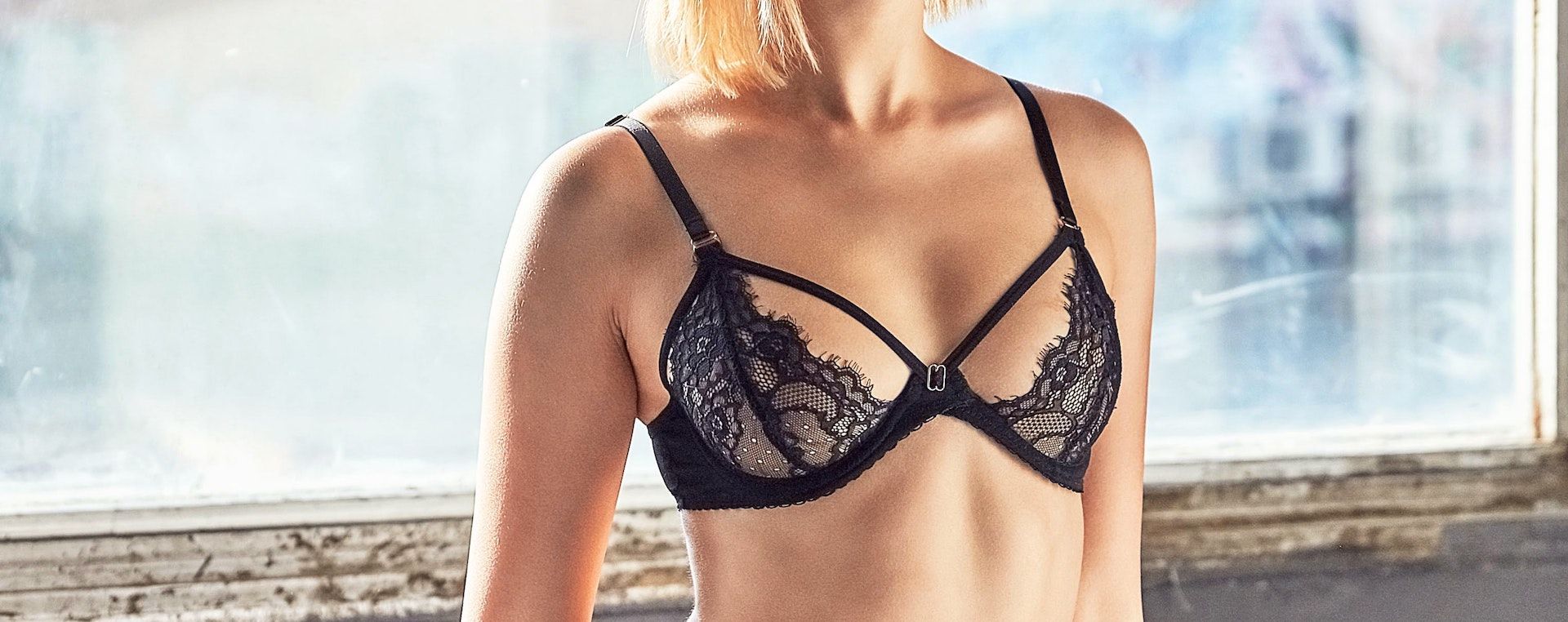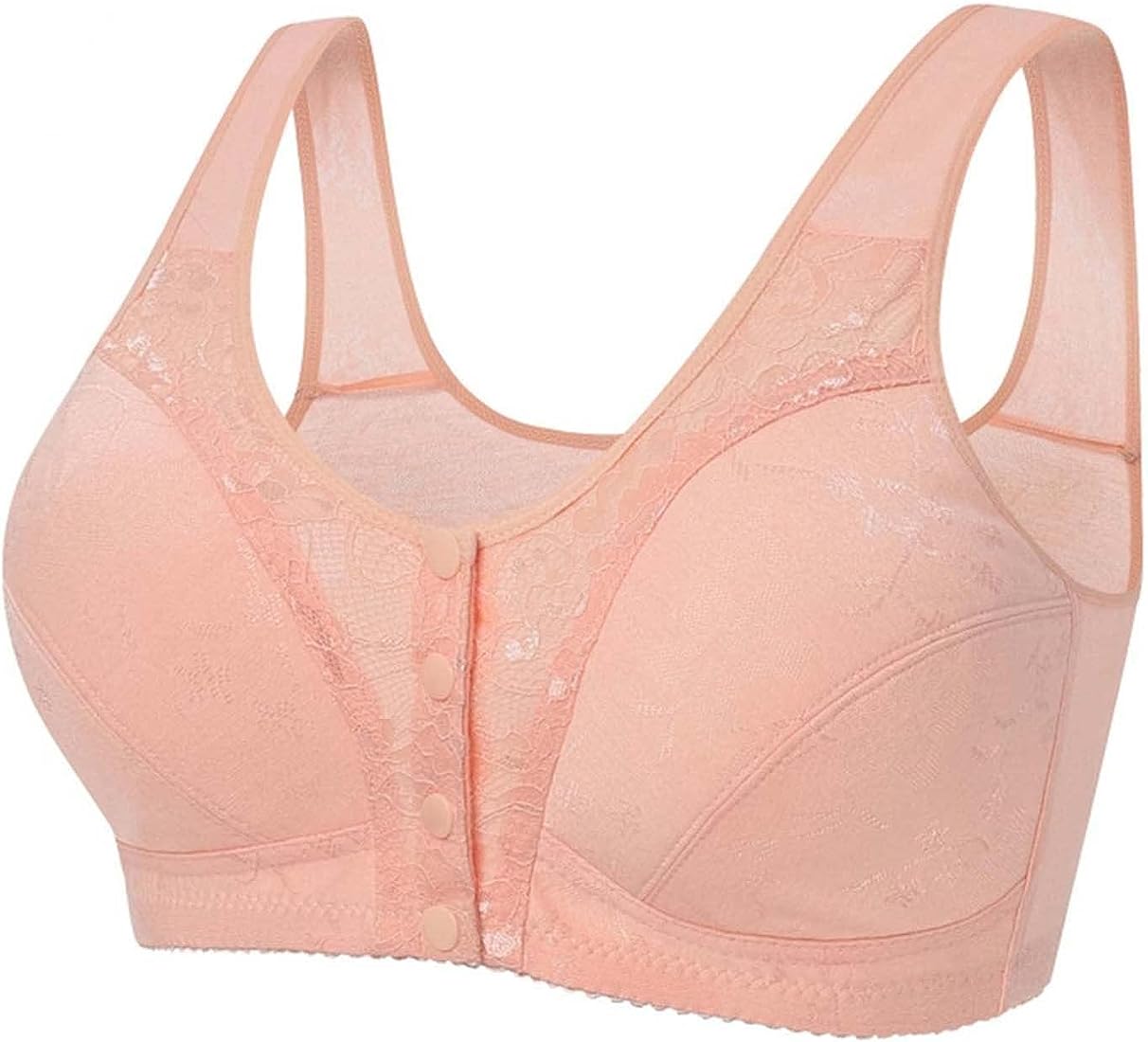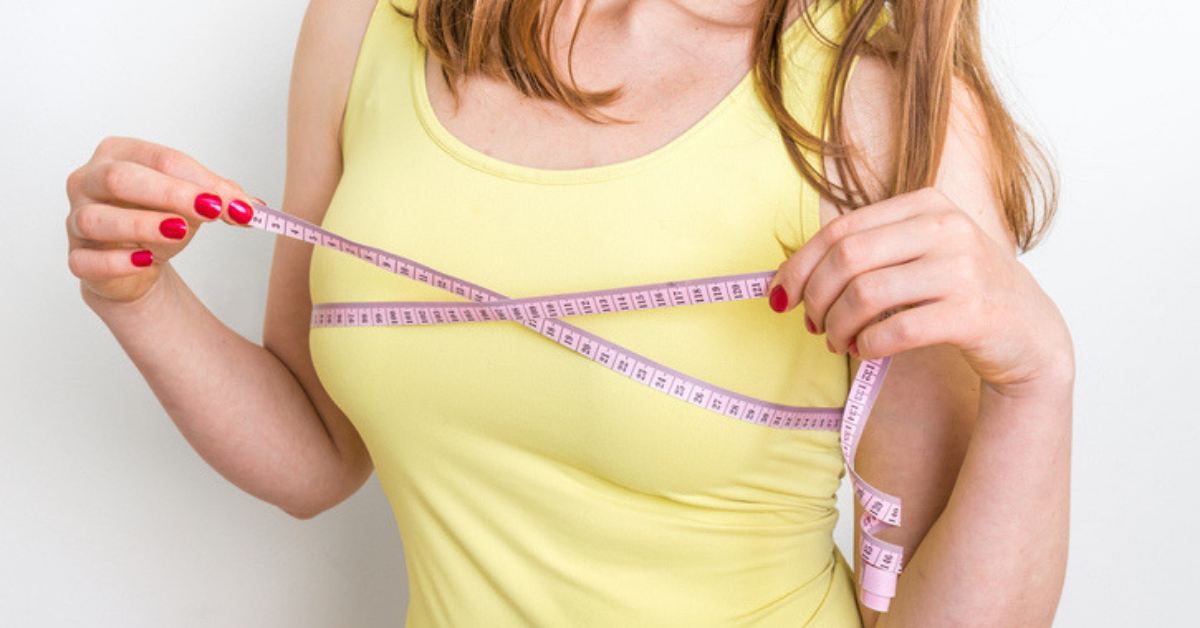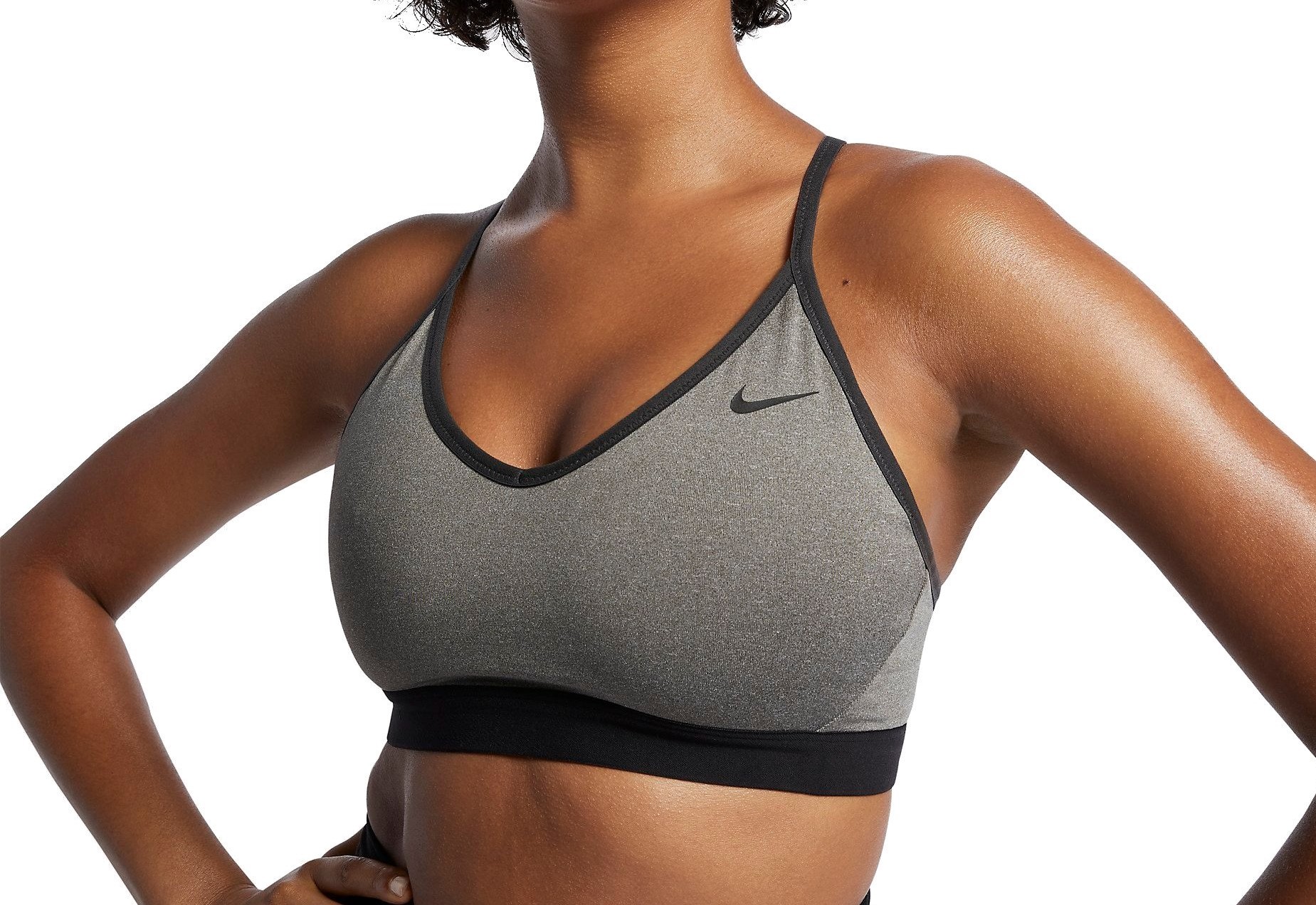Home>Women's Underwear>Bras>What Is A Band Size On A Bra
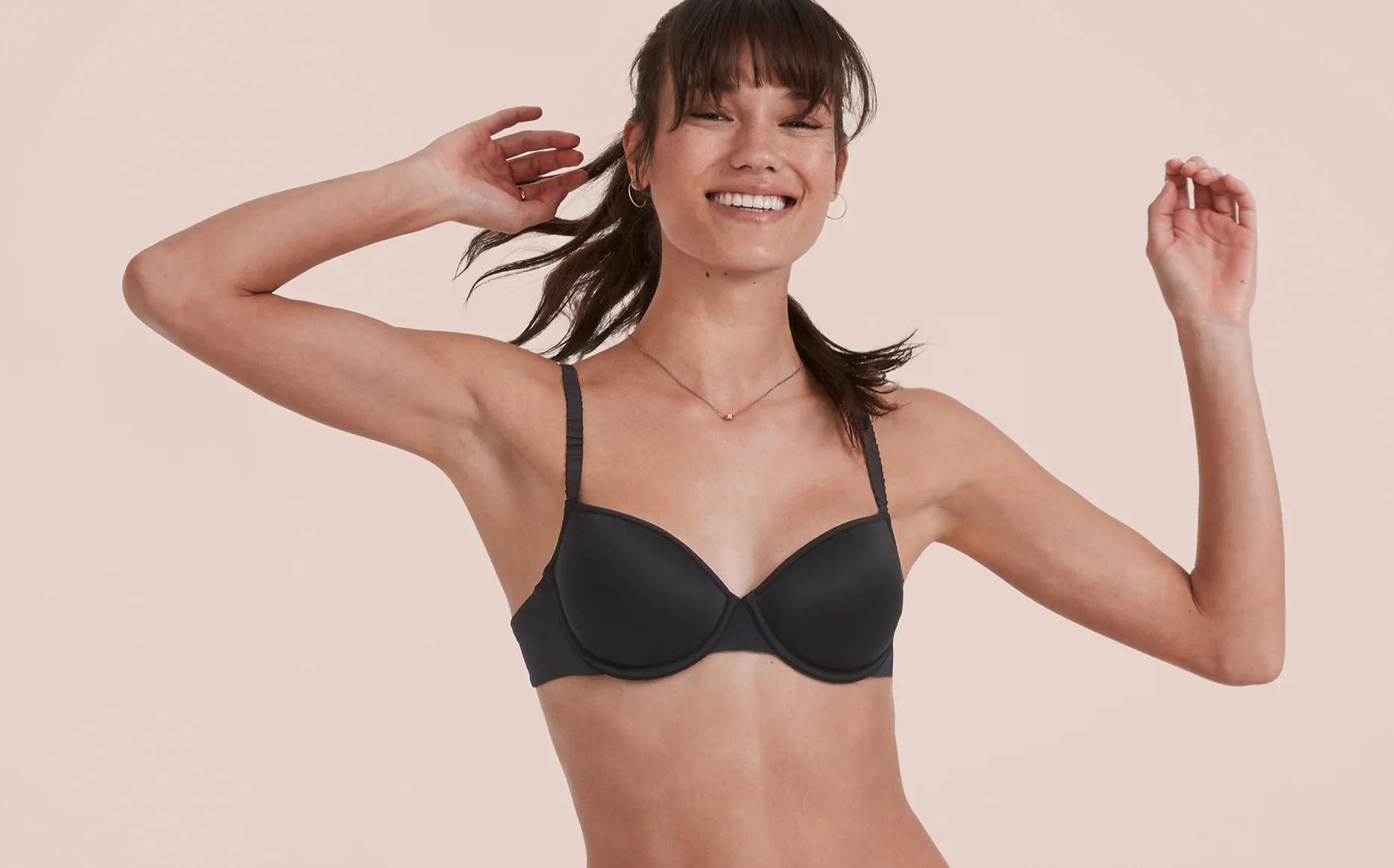

Bras
What Is A Band Size On A Bra
Published: July 31, 2023
Discover what a band size on a bra means and why it's essential for a perfect fit. Find your ideal bras with various band sizes for ultimate comfort and support.
(Many of the links in this article redirect to a specific reviewed product. Your purchase of these products through affiliate links helps to generate commission for Under-tec.com, at no extra cost. Learn more)
Table of Contents
Introduction
When it comes to finding the perfect fitting bra, understanding the band size is crucial. The band size refers to the numerical measurement that determines how snugly the bra fits around your ribcage. Getting the right band size is essential for both comfort and proper support.
Many women underestimate the importance of a correct band size, often focusing solely on cup size. However, the band size is the foundation of a well-fitting bra, as it provides the majority of the support. Wearing a bra with the wrong band size can lead to discomfort, unsightly bulges, and even potential health issues.
In this article, we will dive into the world of band sizes, explaining why they matter and how to find the perfect fit. From measuring your band size to understanding common issues, we will cover everything you need to know to make informed decisions when shopping for bras.
Before we delve into the details, it’s important to note that the band size is represented by a numerical value, such as 32, 36, or 40. This number corresponds to the measurement in inches or centimeters of your underbust, the area just below your breasts. Now, let’s explore why the correct band size plays a crucial role in the overall fit and comfort of your bra.
Understanding Band Size
Band size is a fundamental aspect of bra fitting, as it determines how the bra fits around your body. It is important to understand that the band provides the majority of the support, while the cup size determines the volume and shape of your breasts. Therefore, finding the right band size is essential for both comfort and support.
The band size is represented by a numerical value, such as 32, 36, or 40. This number corresponds to the measurement in inches or centimeters of your underbust, which is the area just below your breasts. It is important to note that different brands may have slight variations in their sizing, so it is always recommended to refer to the specific brand’s size guide for accuracy.
Understanding your band size is crucial because wearing a bra that is too tight or too loose can lead to various issues. If the band is too tight, it can cause discomfort, leave marks on your skin, and can even restrict your breathing. On the other hand, if the band is too loose, it will not provide adequate support, leading to sagging breasts and an overall lack of shape.
It is worth mentioning that band sizes can differ significantly based on individual body types and preferences. Some people may feel more comfortable with a slightly looser or tighter band, depending on their personal comfort level and needs. However, it is important to make sure that the band provides sufficient support while remaining comfortable throughout the day.
Now that we have a basic understanding of band size, let’s explore why finding the correct band size is essential for an optimal bra fit in the next section.
Importance of Correct Band Size
Choosing the correct band size for your bra is crucial for several reasons. It not only affects your overall comfort but also plays a significant role in providing the necessary support for your breasts.
One of the primary reasons why the correct band size is important is for optimal comfort. Wearing a bra with a band that is too tight can cause discomfort, skin irritation, and even pain. On the other hand, a band that is too loose will fail to provide the necessary support, leading to constant readjustment and an overall lack of comfort. By finding the right band size, you can ensure that your bra fits snugly and comfortably, allowing you to go about your day without any distractions or discomfort.
The correct band size is also essential for providing adequate support. The majority of the bra’s support comes from the band, which should firmly anchor the bra to your ribcage. A properly fitted band will lift and support your breasts, giving them a flattering shape and preventing sagging. It also helps distribute the weight of your breasts evenly across your chest, reducing strain on your shoulders and back. Whether you have smaller or larger breasts, finding the correct band size is crucial for maintaining proper support and preventing long-term issues.
Furthermore, the correct band size ensures a smooth and flattering silhouette. A properly fitted band will lie flat against your chest, without any gaps or wrinkles. This creates a seamless look under clothing, preventing unsightly bulges or visible lines. Additionally, a well-fitting band can enhance your natural shape and give you a more streamlined appearance, boosting your confidence and making you feel great in whatever you choose to wear.
Lastly, wearing a bra with the correct band size can prevent potential health issues. A too-tight band can restrict your breathing and impede proper circulation. It may also put excessive pressure on your breast tissue, which can lead to discomfort and even breast pain. Conversely, a band that is too loose may fail to provide the necessary support, leading to strain on your back and shoulders. By finding the right band size, you can minimize these risks and ensure optimal comfort and support for your breasts.
Now that we understand the importance of a correct band size, let’s explore how to measure your band size accurately in the next section.
How to Measure Band Size
Measuring your band size accurately is essential to finding the right fit for your bra. To measure your band size, you will need a soft measuring tape and a mirror to ensure accuracy. Follow these steps to measure your band size:
- Start by wearing a non-padded bra or no bra at all. This will give you the most accurate measurement.
- Stand in front of a mirror and make sure the measuring tape is parallel to the floor.
- Wrap the measuring tape around your body, just below your bust. Ensure that the tape is snug but not too tight, and keep it level all the way around.
- Take note of the measurement in inches or centimeters.
- If you get an odd number, round it up to the nearest even number. This is your band size. For example, if your measurement is 33 inches, round it up to 34 inches.
It is important to remember that measuring your band size is just the first step in finding the perfect fit. Every person’s body is unique, and different brands or styles may fit differently. It’s always a good idea to try on different sizes and styles to determine what feels most comfortable and supportive for you.
If you prefer not to measure yourself, many lingerie stores or department stores offer professional bra fitting services. Trained professionals can take your measurements and help you find the right band size and style that suits your needs.
Now that you know how to measure your band size accurately, let’s explore the factors you should consider when determining the perfect band size for your bra in the next section.
Factors to Consider for Band Size
While measuring your band size is a crucial step, there are several factors to consider when determining the perfect band size for your bra. These factors can vary from person to person and can affect how the bra feels and fits. Here are some key factors to keep in mind:
- Comfort level: Different individuals have different comfort preferences when it comes to their bra’s band size. Some people may prefer a snugger fit for more support, while others may feel more comfortable with a slightly looser band. Listen to your body and find a band size that feels most comfortable to you.
- Elasticity of the band: The elasticity of the band can vary between different bra brands and styles. Some bands may have more stretch, while others may be firmer. Consider your personal preference for how snug or stretchy you want the band to be.
- Breathability: It’s important to choose a band size that allows for proper air circulation and breathability. A band that is too tight can restrict your breathing, while a band that is too loose may not provide sufficient support. Finding the right balance is key for comfort and overall well-being.
- Body changes: Keep in mind that your band size may change over time due to factors like weight fluctuations, pregnancy, or hormonal changes. It’s essential to regularly measure your band size to ensure you are wearing the correct size and prevent any discomfort or lack of support.
- Brand variations: Different bra brands may have slight variations in their sizing and fit. What may be your perfect band size in one brand may not be the same in another. When shopping for bras, it is always helpful to refer to the specific brand’s size guide and try on different sizes to find the best fit for you.
Remember, finding the perfect band size is a process of trial and error. It’s important to be patient with yourself and explore different options to find the band size that offers optimum comfort and support for your unique body shape and preferences.
Now that we have discussed the factors to consider when determining your band size, let’s explore some common band size issues that can arise and how to address them in the next section.
Common Band Size Issues
While finding the perfect band size is essential for a comfortable and supportive bra fit, there are common band size issues that many individuals encounter. Understanding these issues can help you identify if you are wearing the wrong band size and take appropriate steps to address them. Here are a few common band size issues:
- Band riding up: If your band consistently rides up your back, it’s a sign that the band size is too big. A properly fitted band should sit parallel to the ground and remain in place throughout the day. Consider sizing down to a smaller band size to ensure a snug and secure fit.
- Band digging into the skin: On the contrary, if your band digs into your skin, leaving marks or causing discomfort, it indicates that the band size is too small. Wearing a band that is too tight can result in skin irritation, restricted breathing, and overall discomfort. Consider sizing up to a larger band size for a more comfortable fit.
- Gaps or wrinkles in the band: If you notice gaps or wrinkles in the band, it may indicate that the band size is incorrect. This usually happens when the band is too big and fails to provide proper support. Trying a smaller band size or experimenting with a different brand or style may help eliminate these fit issues.
- Uneven band tension: Sometimes, the band may feel tighter or looser on one side compared to the other. This can be attributed to differences in chest shape or uneven weight distribution. In such cases, it may be helpful to explore bras with adjustable straps or seek professional fitting assistance to ensure proper band tension on both sides.
It’s important to listen to your body and be aware of these common band size issues. Remember, finding the right fit may require trying on different sizes, styles, and brands. Don’t hesitate to experiment and seek professional fitting advice if needed.
Now that we have addressed common band size issues, let’s move on to some tips for finding the right band size in the next section.
Tips for Finding the Right Band Size
Finding the perfect band size for your bra can be a process of trial and error. However, with these helpful tips, you can navigate the fitting process more effectively and increase your chances of finding the right band size:
- Measure yourself regularly: As your body can change over time, it’s important to measure your band size regularly. Weight fluctuations, pregnancy, and aging can all impact your body shape. By measuring yourself regularly, you can ensure that you are wearing the correct band size and maintain optimal comfort and support.
- Try on different sizes: Don’t be afraid to try on different band sizes when shopping for bras. Sizing can vary between brands and styles, so it’s important to experiment with different options. If you’re uncertain about your size, try starting with your measured band size and go up or down a size to see which feels the most comfortable and supportive for you.
- Consider sister sizing: If you find that the band size you measured feels too tight but the cups fit well, you can try a sister size. Sister sizing involves going up in band size but compensating by choosing a smaller cup size. For example, if your measured band size is 34 and the cups fit well, you could try a 36 band size with a smaller cup size, such as 36B instead of 34C.
- Pay attention to the fit of the band: When trying on a bra, pay close attention to how the band fits. It should feel snug but not overly tight, and it should sit level around your body. Make sure the band doesn’t ride up or dig into your skin. Remember, the band provides the majority of the support, so it’s crucial to get this aspect right.
- Experiment with different styles: Different bra styles may have different band constructions, which can affect the fit. For instance, a bra with a wider band or a longline style may fit differently than a traditional bra. Don’t hesitate to try on various styles to find the one that suits your body shape and preferences the best.
Remember, finding the right band size is a personal journey, and it may take some time and experimentation to find what works best for you. Don’t be discouraged if it takes a few tries to get it right. With these tips and some patience, you’ll be able to find a bra with the perfect band size that provides both comfort and support.
Now that we have covered various tips for finding the right band size, let’s summarize the key points we’ve discussed in this article.
Conclusion
Understanding and finding the right band size is essential for a comfortable and well-fitting bra. The band size forms the foundation of proper support and plays a significant role in your overall comfort and confidence. By wearing the correct band size, you can prevent discomfort, ensure optimal support, and enhance your natural shape.
When measuring your band size, it’s important to use accurate methods and consider factors such as comfort level, elasticity, breathability, and body changes. Additionally, being aware of common band size issues can help you identify whether your bra fits correctly and take appropriate steps to address any challenges you may experience.
Through trial and error, trying on different sizes, styles, and brands, you can find the perfect band size for your unique body shape and preferences. Regularly measuring yourself, considering sister sizing, and paying attention to the fit of the band can all contribute to a more successful fitting experience.
Remember, finding the right band size is a journey that requires patience and persistence. It’s worth investing the time and effort to find the perfect fit, as wearing a well-fitted bra can significantly improve your comfort, support, and confidence.
So, take the time to measure yourself accurately, explore different sizes and styles, and trust your body’s signals for what feels most comfortable and supportive. With these insights and tips, you’ll be well-equipped to find the ideal band size for your bras and enjoy the comfort and confidence that comes with wearing a perfectly fitting bra.

